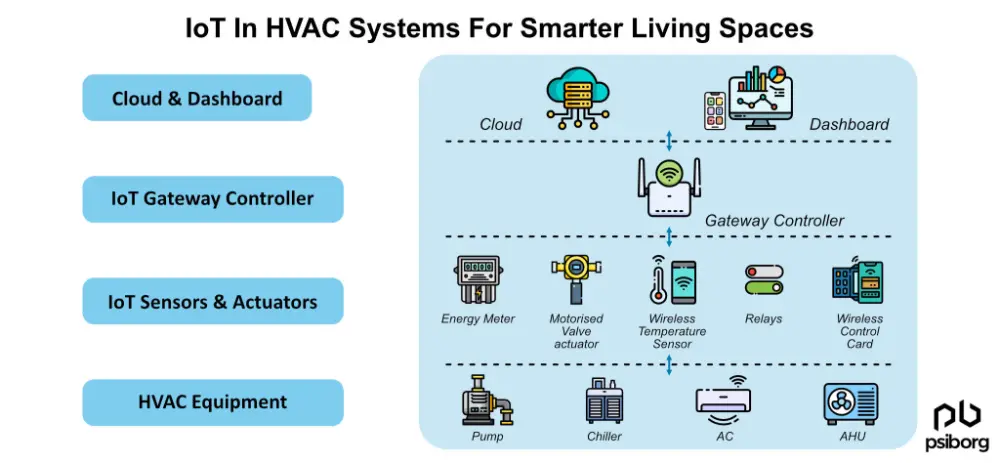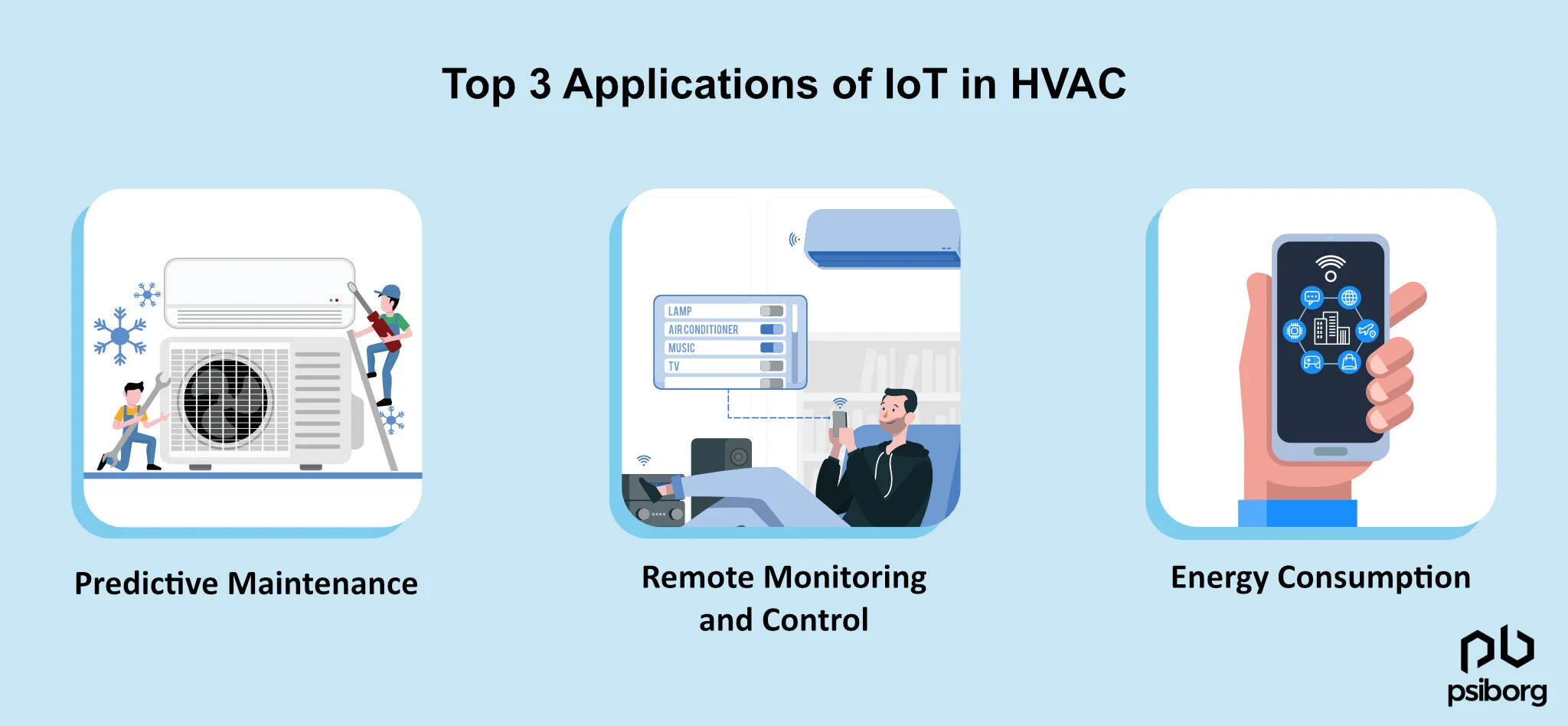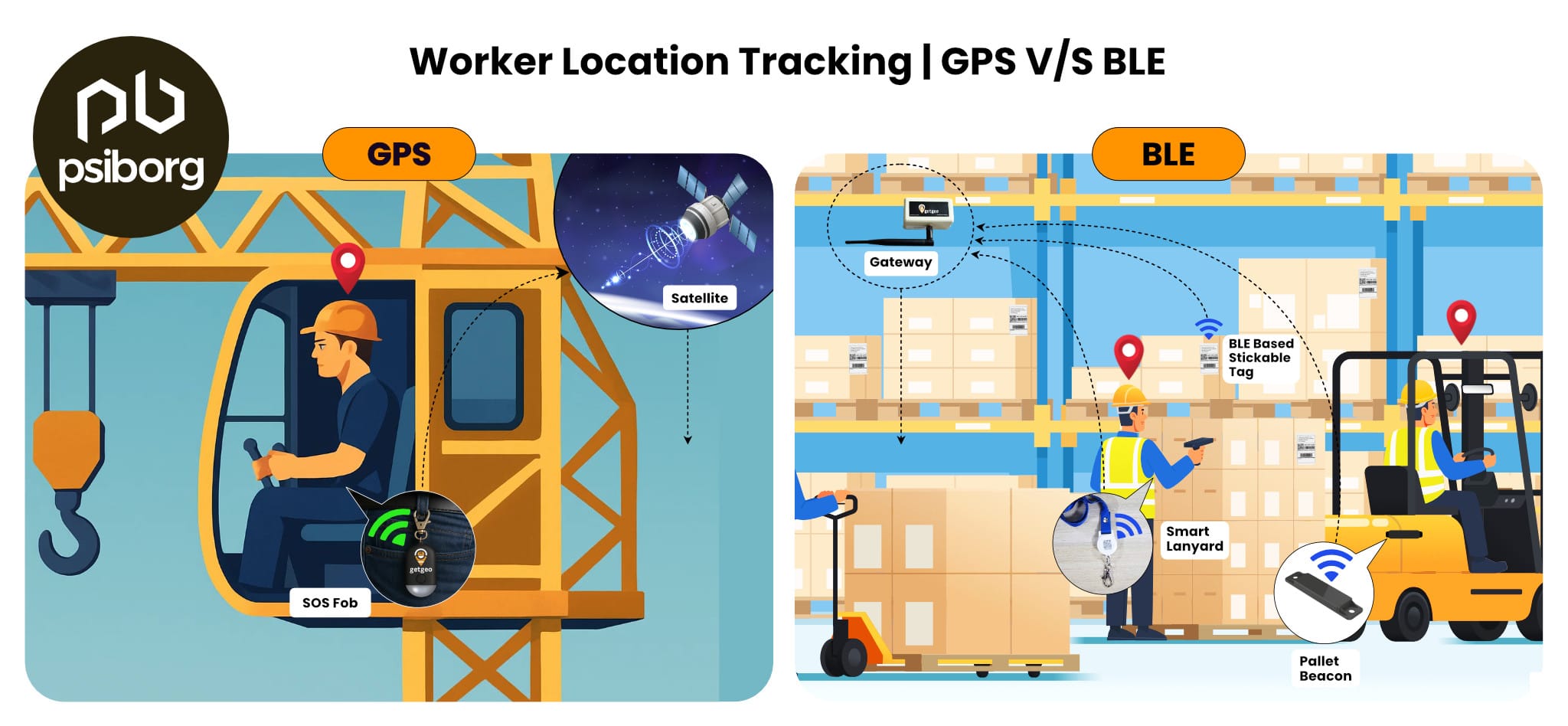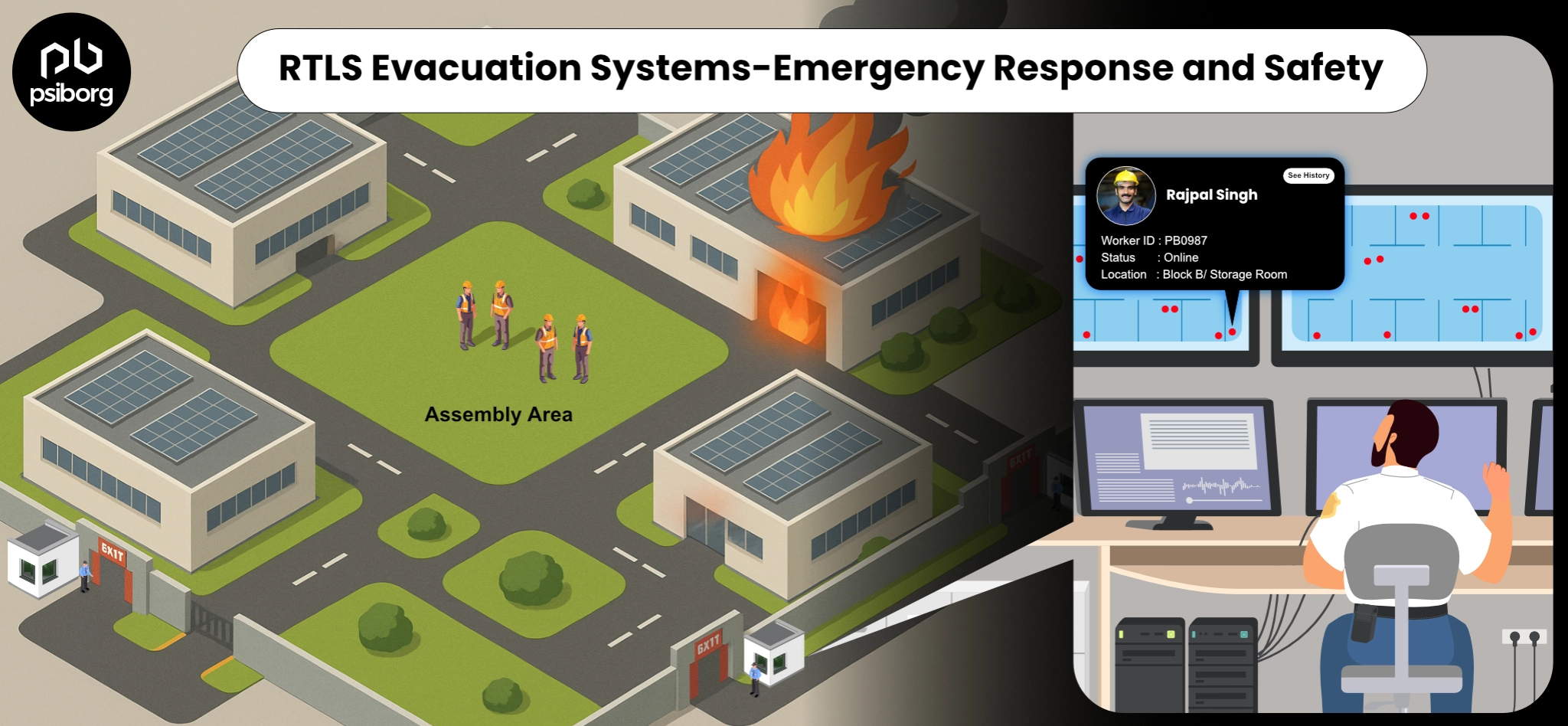HVAC stands for Heating, Ventilation, Air Conditioning, and IoT in HVAC means the integration of Internet of Things technology in the HVAC system.
Today, builders are incorporating HVAC into multistorey smart buildings, be it commercial or residential. HVAC offers convenience and comfort to visitors and residents, thus giving a good living experience.
Even if you are remotely in touch with the ongoing tech trends, you must be using IoT devices. For instance, smart watches, smart lights, smart TVs, and whatnot.
The more convenience and comfort these HVAC systems provide, the more inconvenient it is to manage and control them.
However, the use of IoT in HVAC systems is improving their management in all settings. We can say —IoT is no longer an alien to the HVAC industry.
Forward-thinking companies around the world have started adopting IoT to grow their businesses. After all, only by initiating IoT adoption, you will achieve the transformation that you dream of in your business.
In today’s blog, let’s discuss the applications and benefits of IoT in HVAC, and we will give you an idea of how PsiBorg’s smart HVAC and smart building management system service can help your business transform and reach great heights.
What is a Smart HVAC system?
Smart HVAC systems are automatic heating, ventilation, and air conditioning systems that require minimal human intervention and have now become a very important part of Building Management Systems (BMS) and smart home automation systems.
Furthermore, the primary difference between traditional and smart HVAC systems is “being smart.”
The smart HVAC system is capable of determining on its own where and what kind of actions are needed to create a comfortable accommodation environment inside every corner of the building.
So, if the room is getting colder, the system itself will turn off the AC for a limited time. There is no need for the user to leave their work and turn off the AC. Also, if there’s no ambient light inside a room, the system will detect itself and turn ON the lights.
Furthermore, people also link the HVAC system with wasteful consumption of energy. That’s why a smart HVAC system is a necessity in today’s time.
If you still don’t think it is cool, let us tell you what problems a smart HVAC system solves that a traditional HVAC system faces.
Problems with traditional HVAC system Management
Occupants of residential/commercial buildings with installed HVAC systems commonly face the following issues:
No Visibility
The not-so-smart, traditional HVAC system is known to waste a lot of energy because of its operations, even when it’s not required. This happens due to a lack of transparency into aspects like operating hours, occupancy rates, temperature, humidity, and indoor air quality. These all factors result in unnecessary HVAC run hours that lead to energy wastage.
No Automation
Age-old HVAC systems are manually controlled, which results in overcooling and undercooling because the system is entirely dependent on human intervention.
In the traditional HVAC system, there’s a lack of smart automation that can control key metrics required to maintain an ambient environment, such as IAQ levels, occupancy rates, and much more.
No Proper Maintenance
HVAC is a huge and complex system that works with several mechanical components, like belts and bearings. The system’s performance can be negatively affected if minor wear and tear occurs in any part of that complex system.
In addition, repairing these components, when they have failed leads to occupants’ discomfort, plus the repair cost also increases as regular maintenance or a proactive maintenance approach hasn’t been taken.
Now is the Era of IoT in HVAC!
No matter how cool HVAC IoT solutions sound, you are probably wondering how this is even possible. So, let us tell you how a smart HVAC system makes decisions.
A smart HVAC system makes all this possible because it involves a network of interconnected sensors, IoT devices, and software that can collect and analyze data, make decisions, and improve the HVAC system’s performance.
However, for a smart HVAC device that can act on commands and make smart decisions, it needs to have some connected elements.
The primary elements that make a “smart HVAC system” a reality are:
Sensors
IoT sensors lay the foundation for the HVAC system. It collects data on temperature, humidity, air quality, and occupancy. These sensors are spread all around the building and give a comprehensive view of environmental conditions around all corners of the building.
Connectivity
IoT systems need reliable connectivity to transfer data, and for this, WiFi, Bluetooth, or other wireless technologies are utilized. Sensors, controllers, and central monitoring systems require reliable connectivity to function smoothly.
Controller
The smart HVAC system also uses controllers to receive data from the sensors. These sensors can be centralized or distributed for zone-specific control.
Cloud-based platforms
All IoT HVAC systems utilize a cloud-based IoT platform for data analysis and storage. These platforms allow remote monitoring and control.
What is the Workflow of a Smart HVAC System?

Now that you have information about the involved components in a smart HVAC system, let’s understand the IoT workflow for the same.
Consider yourself an occupant of a building. As a user, open the mobile app on your smartphone and navigate to the section to control cooling.
You can select the desired temperature or mode and send the command through the mobile app. The initiated command is sent from the mobile app to the cloud service.
The cloud stores the command and processes it based on your preference, along with some additional logic being configured.
After processing the command, the cloud service forwards this action to the smart IoT device that is responsible for controlling the AC.
The installed smart device will receive the command, interpret it, and send the signal to the AC to adjust its settings accordingly. Now, this signal can be transmitted wirelessly or through a wired connection.
Here, voice commands can also be integrated using IoT voice control, and as a user, you can also create automation scenarios using smart assistants.
This IoT-based smart HVAC system forms an IoT chain and works accordingly. In the chain, each element has its role, and even if a single component fails, the chain will break. This will result in a slow response and the user experience will suffer.
(To avoid all such mishaps and to make your smart HVAC system work efficiently, it’s important to choose an IoT product development service provider, who holds expertise in this particular field.
And since we are on this topic, why don’t you explore our case study on smart home automation solutions)
Top 3 Applications of IoT in HVAC

The preceding example is just one of the scenarios that a smart HVAC system makes possible. However, there’s much more that a smart HVAC system can provide.
Below are some of the top applications for using IoT in HVAC
1. PREDICTIVE MAINTENANCE
The traditional approach to dealing with any problem is to act after it arises.
This is known as reactive maintenance. The other way is to perform preventive maintenance by creating specific schedules.
Either way, these traditional methods lead to zero transparency throughout the operation. However, with the entry of IoT in HVAC system, the sensors will gather real-time data on the system’s health, which the management team can continuously access.
So, if any problem is detected, like excessive power usage or performance drops, the team can diagnose them and take action on time. This is termed as predictive maintenance. The integration of IoT in HVAC promotes taking a preventive approach and helps businesses keep their customers and occupants happy.
2. Remote Monitoring and Control
The age-old HVAC system used to simply work until they did. The only way to diagnose any problem is to use expensive tools or schedule a technician visit.
Meanwhile, in smart HVAC systems, remote monitoring using IoT is possible, where the management team can remotely take insights on the systems working and can diagnose issues remotely, all in real-time.
For instance, some sensors detect gas and water leakage. And the other piece of sensors can detect the on/off cycles of the system, pressure, humidity, and IAQ.
By getting access to all this information in real-time continuously, the maintenance of the entire complex HVAC system can become more efficient and time-saving.
3. Energy Consumption
Traditional HVAC systems do not allow you to control or monitor your energy consumption. The energy usage data was only accessible after it had been consumed. There was no point in getting that data.
However, by getting real-time access to data, it becomes more convenient to monitor the energy usage trend. Electricity consumption monitoring also helps in making predictions about its usage.
What are the Benefits of Using an HVAC IoT Solution?
By integrating an IoT based HVAC monitoring system with a smart building management system, the following benefits can be obtained:
- Increased energy efficiency
- Minimum energy costs
- Sustainable
- Occupant comfort
- Predictive maintenance approach
- Interoperability
Sell Smart Living Spaces!
It’s safe to say that IoT has started spreading its roots in almost every aspect of our lives and businesses. The vast scope of IoT applications is the reason enough.
The benefits that IoT offers in HVAC monitoring systems are far more than simplifying their management.
IoT-based HVAC monitoring systems can transform your property, and you can confidently sell smart living spaces to buyers.
All you need is a team that can bring this idea into reality for your business.
PsiBorg, as an IoT service provider, will be a reliable IoT partner.
We are always available to assist you with any questions you may have about our smart building management or home security and automation services.
Get in touch with us to discuss your requirements.
FAQs
The Smart HVAC (Heating, Ventilation, and Air Conditioning) system means the integration of sensors, thermostats, and connectivity to improve energy usage, increase comfort, and control remotely via smartphones.
IoT in HVAC is used to make the traditional HVAC system smarter by offering remote monitoring and control of HVAC appliances. Moreover, this technology uses sensors to collect data on temperature, humidity, occupancy, and optimal lighting. The collected data is analyzed to remotely control the HVAC system for improved comfort and cost savings.
Here, the term “IoT in HVAC”- HVAC stands for Heating, Ventilation, and Air Conditioning.
HVAC IoT technology includes smart thermostats for monitoring energy consumption, variable refrigerant flow systems for control, remote monitoring, advanced air filtration, and predictive maintenance, all of which improve comfort and indoor air quality.





